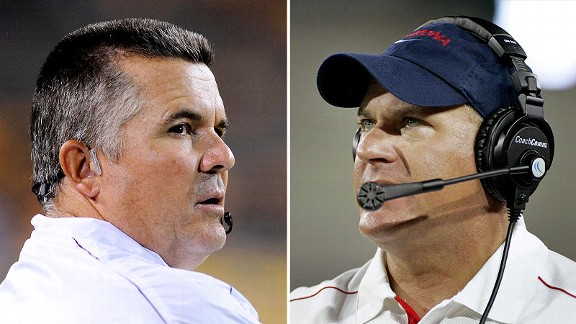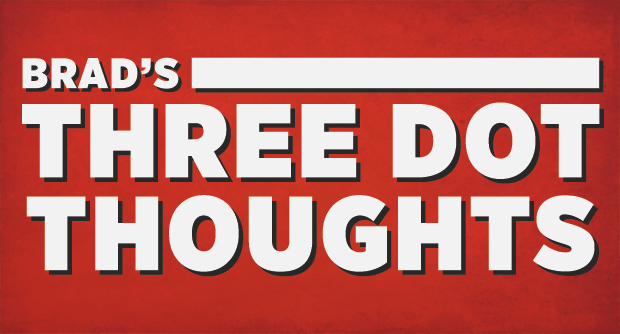By Jeff Munn
When the Pac-12 announced the University of Arizona’s Pac-12 football game at Utah October 15 would kickoff at 8:00 p.m. Salt Lake time for television, I thought of Greg Hansen.
The longtime columnist for the Arizona Daily Star probably had his mid-week column written within 10 minutes of the announcement.
Hansen has been highly critical of the Pac-12 scheduling anybody, Arizona or otherwise, for a late night kickoff to accommodate television. The latest instance involving UofA occurred last Halloween, when the ‘Cats kicked off in Seattle against Washington at 8:00 p.m. That meant the team would arrive back home in Tucson somewhere around an hour AFTER sunrise Sunday morning.
While Salt Lake to Tucson isn’t near as long a plane ride as Seattle to Tucson, Mr. Hansen has a point.
The Pac-12 has problems perhaps none of the other Power Five conferences face when it comes to scheduling.
The first is the map. The Pac-12 covers way more real estate than the Big 12 and SEC. Even the ACC, which stretches from Boston to Miami, and the Big Ten, which runs from Baltimore to Omaha, doesn’t have an itinerary that says Pullman to Tucson. Even in football, which travels on charter flights, a trip from the Pacific Northwest to Southern Arizona is not fun. You know it’s a long flight when you’re on your third movie on your iPad.
Combine that with television networks, who love to offer the Pac-12 time slots that end up as late night showings on the East Coast, and you’ve got a dilemma Alabama never faces when they play at Vanderbilt, or when Texas plays at Oklahoma State.
Is there a solution? If there is, it’s not easy to get your hands on.
The Pac-12 needs television as much as anybody else. You can say all you want that SEC teams kickoff regularly at 8:00 p.m. or even later for ESPN, but they don’t have to treat the flight home as a red eye. If the alternative is to play games in the afternoon and not have them televised, you know where that argument’s headed.
There’s also the fact that, because it’s on the West Coast, the Pac-12 simply doesn’t “move the meter” in major East Coast television markets the way the other Power Five conferences do. This week, sixth-rated Stanford plays at Number 10 Washington Friday night at 6:00 p.m. Arizona time on ESPN. That’s 9:00 p.m. in New York. On Thursday nights, the ACC can get on ESPN at 7:30 p.m. Eastern. Why? More interest on the East Coast, of course.
Then there’s the impact on the conference as it relates to the College Football Playoff. If Stanford, who is currently projected by some to be the fourth seed in the tournament, ends up in one of those 11:00 p.m. Eastern kickoffs, you really think anyone on the CFP is staying up to watch?
Football is not alone. Men’s and Women’s Basketball programs in the Pac-12 deal with the same problem. It’s been common for Arizona State men’s basketball to have to sit for two or three days between road games so one of the games on the trip can get picked up by ESPN or FS1.
Women’s programs have it worse, since most, if not all of their travel by plane is commercial. Last season, in order to get included in ESPN’s “Big Monday” package, ASU sat for two days in Corvallis waiting to play Oregon State in a 9:00 p.m. Arizona time tipoff. The team arrived at its Portland hotel afterwards at around 12:30 a.m., just so they could get four hours sleep before a 6:00 a.m. flight.
This puts embattled Pac-12 Commissioner Larry Scott in a difficult position. The conference needs the exposure, late as it is, and more importantly, the money, television provides. The networks want to be able to provide as much live programming as possible, since advertisers prefer a live game to a taped one, given America’s love of the fast forward button.
The problem is not going anywhere anytime soon.
One potential solution is for the Pac-12 Network and Direct TV to end their long dispute, which has kept the network away from Direct TV subscribers who have to choose between NFL Sunday Ticket (Direct TV) and Pac-12 Football. The Big Ten Network is on Direct TV, and it probably wasn’t a coincidence the network ended up with a top ten battle last week between Michigan State and Wisconsin. The Big 10 knew everyone would see it.
Until the rest of the country decides it’s worth it to invest three hours of primetime viewing on Pac-12 sports, coaches like Arizona’s Rich Rodriguez will have to hope their recruits will turn away from Saturday Night Live long enough to watch.


